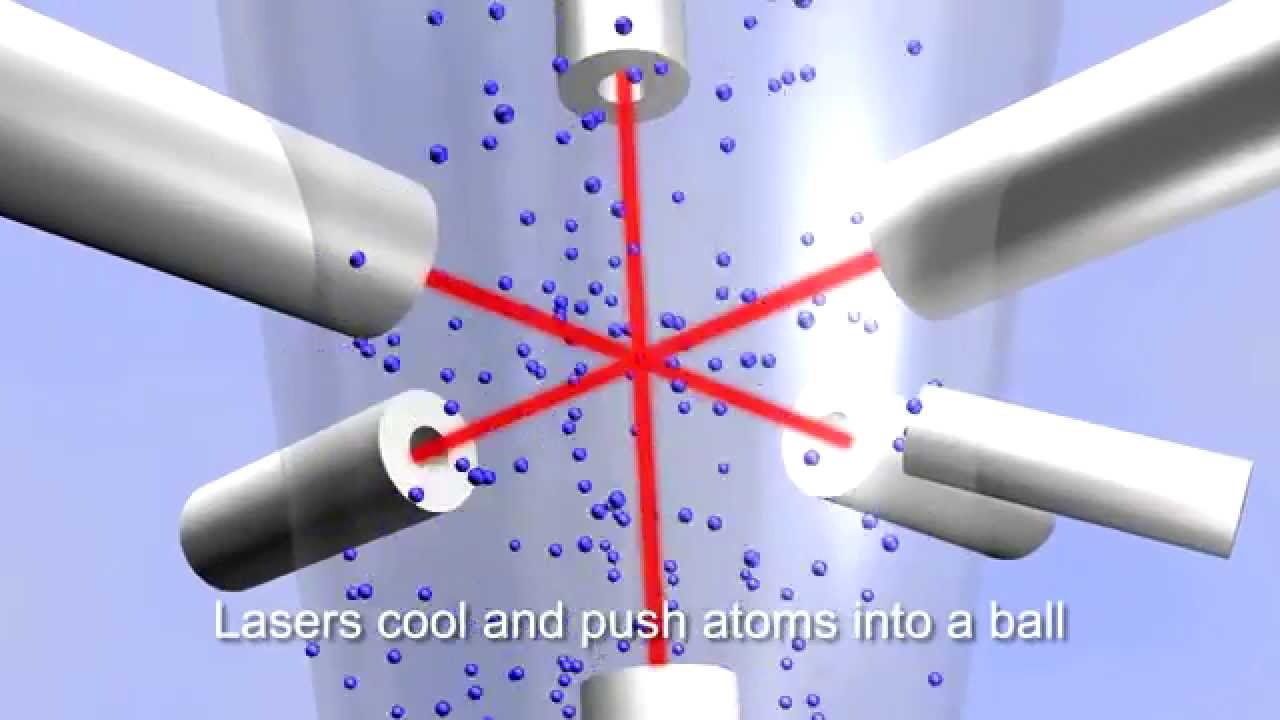Background: How NIST-F2 Works
NIST-F1 and NIST-F2 are called fountain clocks because the cesium atoms are tossed in the air and fall back down inside a vertical tube during a key routine repeated thousands of times an hour.
A gas of cesium atoms is introduced into the clock's vacuum chamber and six infrared laser beams gently push about 10 million atoms into a ball. In this process, the lasers cool the atoms to temperatures near absolute zero and slow them down significantly, to enable precise measurements of their natural vibrations.
Two vertical laser beams produced by the six lasers are used to gently toss the atom balls upward through the flight chamber (the "fountain" action), and then all of the lasers are turned off. This little push is just enough to loft the ball about 1.3 meters high through a microwave-filled cavity. Gravity brings the ball back down through the microwave cavity.
During the trip, some atomic states of the atoms are altered, while others remain the same, as they interact with a microwave signal from a maser. When the trip is finished, another laser is pointed at the atoms. Some atoms—those whose energy states were altered by the microwave signal—emit light, or fluorescence. The resulting photons, the tiny packets of light emitted, are measured by a detector.
This process is repeated while the microwave signal in the cavity is tuned to different frequencies. Eventually, a microwave frequency is found that alters the states of most of the cesium atoms. This frequency is the natural resonance frequency of the cesium atom (9,192,631,770 Hz), or the frequency used to define the second.


